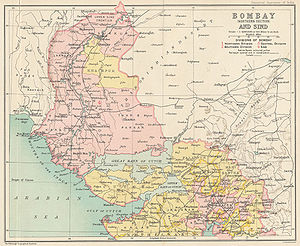| Kori Creek | |
|---|---|
 Location of Kori Creek in British Colonial era map | |
 | |
| Physical characteristics | |
| Mouth | |
• location | Indian Ocean |
• coordinates | 23°35′N68°22′E / 23.583°N 68.367°E |
| Basin features | |
| River system | Indus River delta |

The Kori Creek is a tidal creek in the Kutch region of the Indian state of Gujarat. It lies just to the west of the Great Rann of Kutch area of India. This region belonging to India is a part of the Indus River Delta, which lies across Gujarat state in India and Sindh in Pakistan.
Contents
The Sir Creek, laying around 33 km northwest of Kori Creek, is a disputed area between India and Pakistan.